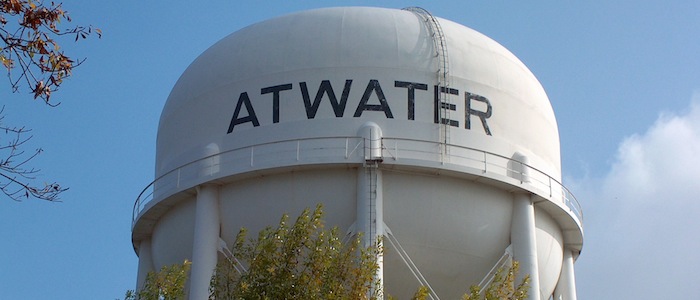At a special council meeting held last night, a pointed conversation began between a Central Valley City, its residents, and its stakeholders. That debate could result in yet another bankruptcy of a beleaguered California city. Facing the continued pressures of a down economy and years of budget deficits, Atwater is officially considering all options – including AB 506 and Chapter 9.
“The City has no other reasonable or viable alternatives,” read a declaration considered by the City council. Their approval, officially demonstrated the depths of the struggles facing the city, which is now in a state of emergency.
The declaration of a fiscal emergency was designed to give the city more flexibility in its mandatory expenses. Many of the contracts currently in place are rigid, limiting the city’s ability to make further cuts, even after rounds of layoffs, furloughs, pension reform, and pay cuts. Already, the work force has been reduced by 40 percent, with remaining employees losing 10 percent of their pay to furloughs.
The city had floated a plan that would call for an additional round of layoffs, and asking employees to accept another 15 percent pay cut.
It was confirmed on Wednesday that 14 employees had already been issued layoff notices. Another 24 had received notices that their jobs could be eliminated as part of upcoming budget solutions.
In the staff report produced in support of the Council Meeting, city staff pointed to a variety of factors that helped lead the city down the path of insolvency.
State-Level Action
For many cities, the loss of VLF fees or redevelopment was an unexpected challenge. However, in Atwater, the city lost untold thousands from the end of redevelopment, more than $100,000 from VLF transfers, and is owed $486,000 in various state-level reimbursements.
The Great Recession
Certainly, the Great Recession has hit the City hard. Home values plummeted from an average cost of $336,000 to just under $140,000. Unemployment continues to plague the city, where the current rate is north of 21 percent, significantly higher than the state’s 11 percent, and it has hasn’t been below 16 percent since 2009.
Cash Reserves and Fund Balances
The City has burned through its cash reserves.
Its water and sanitation funds have not operated in the black in years, losing $60,000 and $50,000 respectively. Contributing to the structural deficits in those two special funds is the absence of rate increases. The water rates in Atwater have not increased since 1992; the sanitation rates have remained the same for 10 years.
Because of the lack of funds available, the city’s utilities have had to defer or cancel various infrastructure improvement projects. For instance, the water utility does not have any backup motors for well pumps, leading to a scramble every time the machinery breaks.
When the City looked to improve its wastewater treatment plant, the city issued bonds. In total, the city issued $84.1 million in bonds. The payments on that are expected to account for $5.3 million in FY 2012/13.
However, bond revenues weren’t enough to cover the cost of construction, and the city used $5 million from the Wastewater special fund reserves to complete the project.
Meanwhile, these special funds have been drawing down general fund reserves by taking “loans,” which have yet to be paid back.
Because the city operates with pooled cash accounts, shortfalls in one or two accounts can impact the liquidity of other accounts.
Budget Deficits
The City’s budget faces a fiscal year shortfall of roughly $3.3 million: $.2 mill carried over from the 2010/11 fiscal year, $2.1 million from the 2011/12 fiscal year, and has a $1 million imbalance in this year’s spending plan.
Citing all these reasons and more, the City moved ahead with their declaration of fiscal emergency, and is looking at desperate measures to save the city’s fiscal house.





